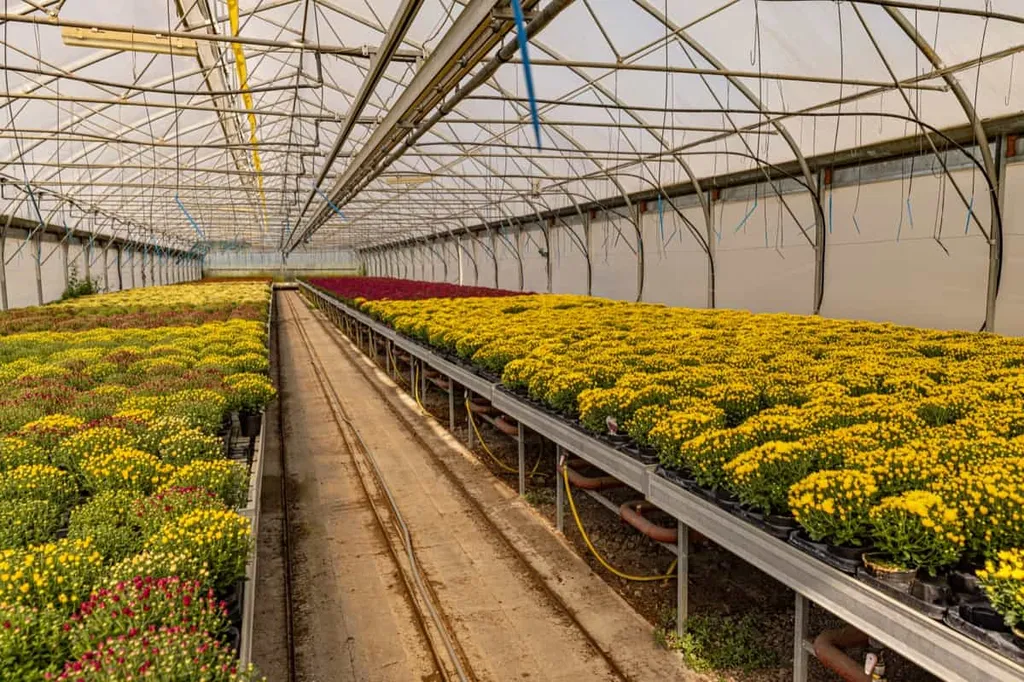In the heart of India’s semi-arid region, a groundbreaking study is reshaping the way farmers approach chrysanthemum cultivation. The research, published in *Frontiers in Agronomy*, reveals that optimizing irrigation and fertigation schedules can significantly boost flower yield, water use efficiency, and economic returns for chrysanthemum growers.
The study, led by B. Gouthami from the Water Technology Centre at ICAR-Indian Agricultural Research Institute in New Delhi, compared different irrigation regimes and fertigation levels on two popular chrysanthemum cultivars, Autumn Pink and Autumn White. The findings are promising, particularly for regions where water scarcity is a pressing concern.
“Our results indicate that the Autumn White cultivar consistently outperformed Autumn Pink in terms of flower yield, water use efficiency, and economic returns,” Gouthami explained. This discovery could guide farmers in selecting the most profitable cultivar for their operations.
The research employed a split-split plot design, testing three irrigation regimes (0.5 Epan, 0.75 Epan, and 1.0 Epan) and three fertigation levels (50%, 75%, and 100% of the recommended fertilizer dose). The results showed that the 0.75 Epan irrigation level achieved the highest water use efficiency, while the highest fertigation level (100% RDF) produced the best yield and economic benefits.
The combination of Autumn White cultivar, 0.75 Epan irrigation, and 100% RDF fertigation consistently delivered the highest gross returns, net returns, and profitability across both years of the study. This finding is particularly significant for commercial growers looking to maximize their returns while conserving water.
The implications of this research extend beyond chrysanthemum cultivation. It underscores the importance of precision agriculture in optimizing resource use and enhancing profitability. As water scarcity becomes an increasingly critical issue, such studies provide valuable insights for farmers and agronomists alike.
Gouthami’s work highlights the potential for sustainable and profitable chrysanthemum production in semi-arid regions. By adopting the recommended practices, farmers can not only improve their yields but also contribute to more efficient water use, a critical factor in the face of climate change.
This study is a testament to the power of scientific research in driving agricultural innovation. As the agriculture sector continues to evolve, such findings will be instrumental in shaping future developments and ensuring sustainable growth.
For those interested in the technical details, the full study is available in *Frontiers in Agronomy*, authored by B. Gouthami from the Water Technology Centre at ICAR-Indian Agricultural Research Institute, New Delhi, India. The research offers a comprehensive guide for farmers and agronomists looking to optimize their chrysanthemum cultivation practices.

